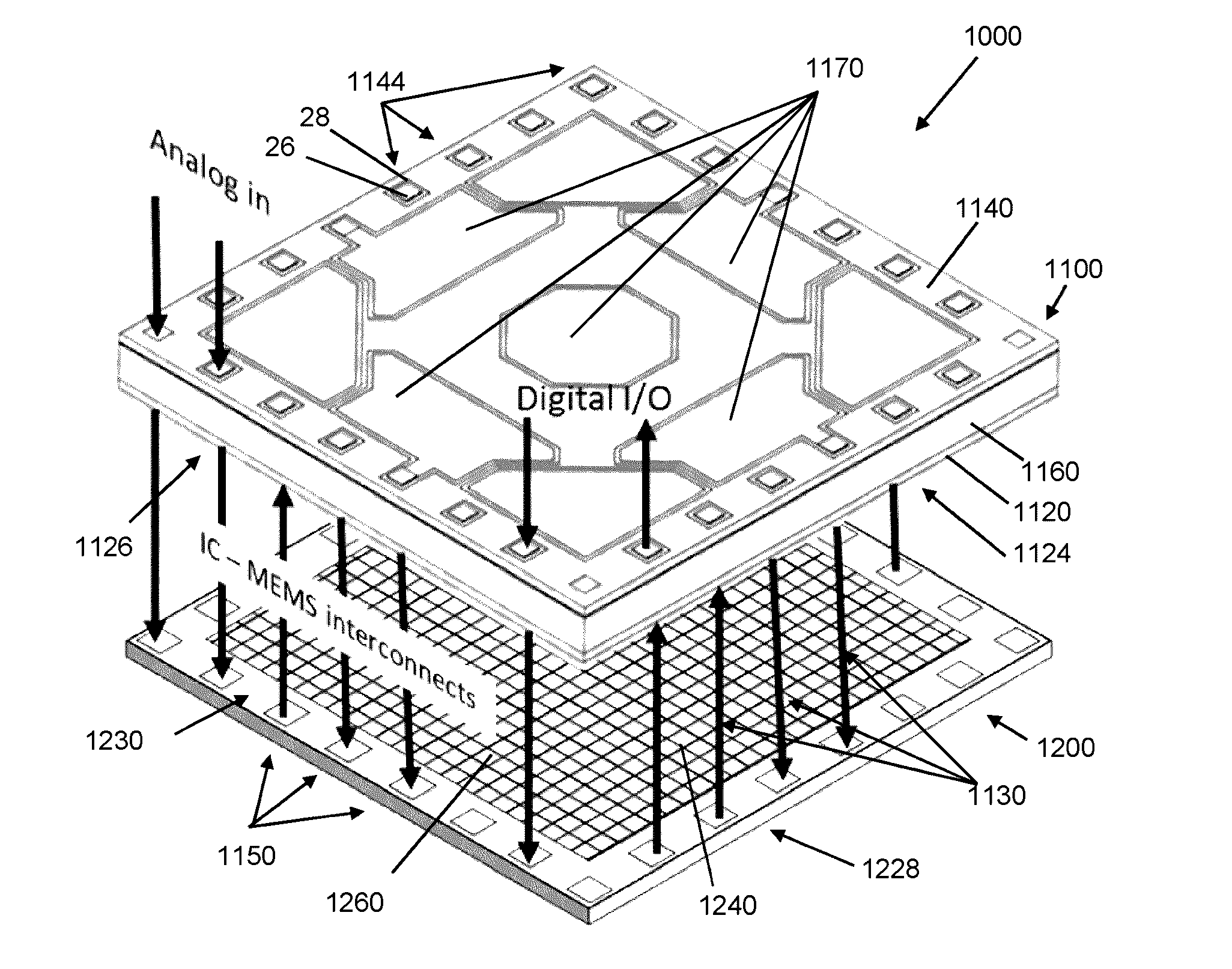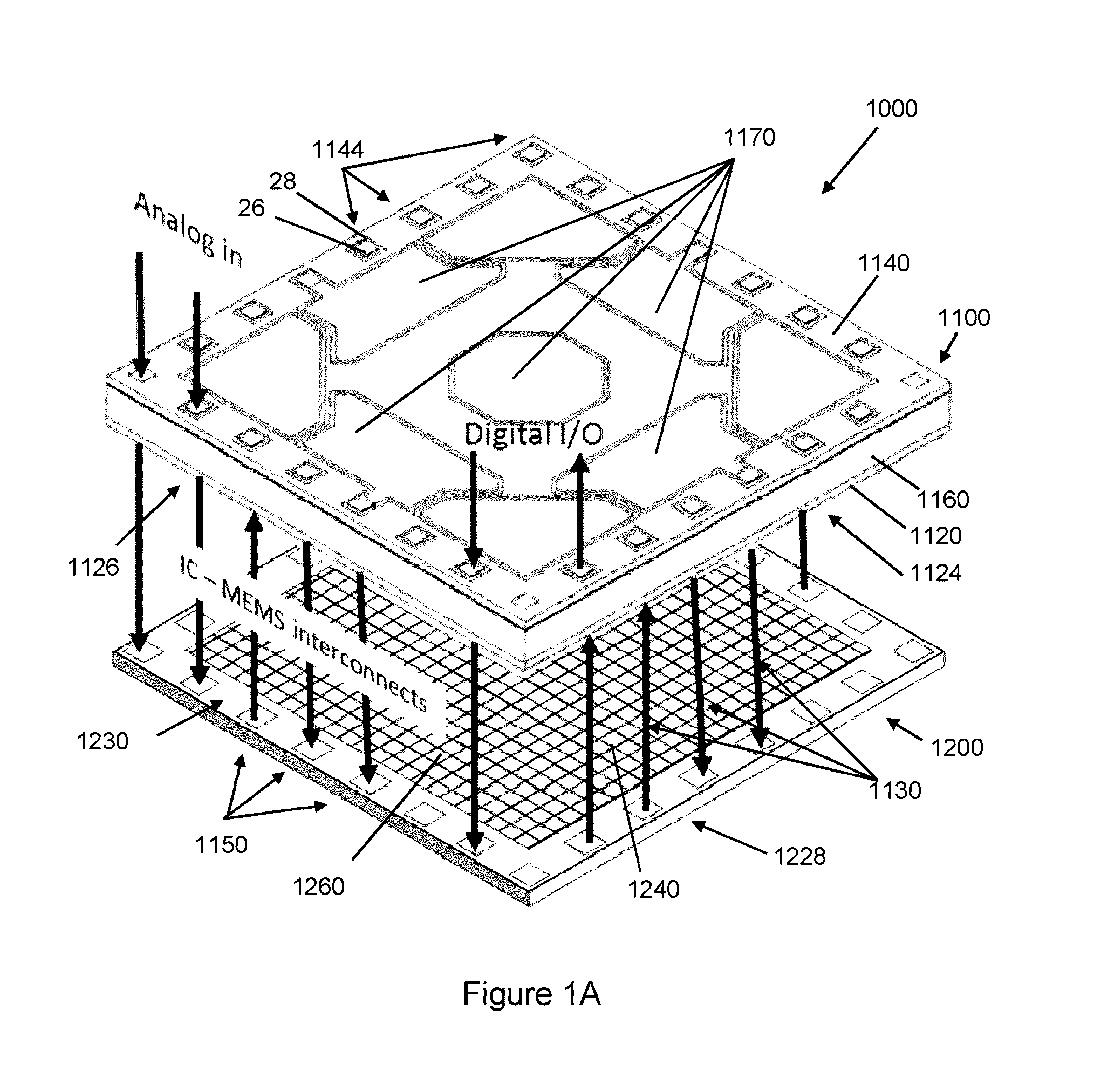Integrated MEMS system
a mems system and integrated technology, applied in the field of integrated mems systems, can solve the problems of growing errors, requiring high sensitivity specifications, and requiring lower bias stability and higher sensitivity specifications
- Summary
- Abstract
- Description
- Claims
- Application Information
AI Technical Summary
Benefits of technology
Problems solved by technology
Method used
Image
Examples
Embodiment Construction
[0038]In the following description, similar features in the drawings have been given similar reference numerals and, in order to preserve clarity in the drawings, some reference numerals may be omitted when they were already identified in a preceding figure. It should also be understood that the elements of the drawings are not necessarily depicted to scale, since emphasis is placed upon clearly illustrating the elements and structures of the present embodiments.
[0039]Throughout the present description, terms such as “top” and “bottom”, “above” and “below”, “over” and “under”, “upper” and “lower”, and other like terms indicating the position of one element with respect to another element are used herein for ease and clarity of description, as illustrated in the figures, and should not be considered limitative. It will be understood that such spatially relative terms are intended to encompass different orientations of the MEMS chips in use or operation, in addition to the orientation...
PUM
 Login to View More
Login to View More Abstract
Description
Claims
Application Information
 Login to View More
Login to View More - R&D
- Intellectual Property
- Life Sciences
- Materials
- Tech Scout
- Unparalleled Data Quality
- Higher Quality Content
- 60% Fewer Hallucinations
Browse by: Latest US Patents, China's latest patents, Technical Efficacy Thesaurus, Application Domain, Technology Topic, Popular Technical Reports.
© 2025 PatSnap. All rights reserved.Legal|Privacy policy|Modern Slavery Act Transparency Statement|Sitemap|About US| Contact US: help@patsnap.com



